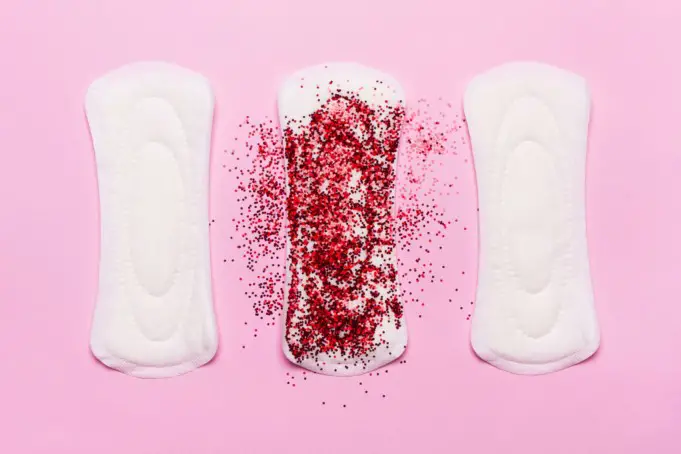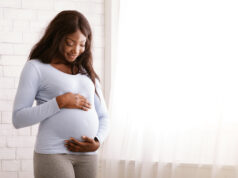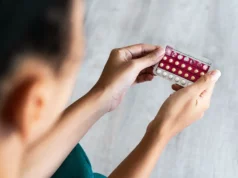Do you know that tracking your menstrual cycle can help you understand how your reproductive system functions?
Menstruation is the process in which blood is shed from the vagina of a woman every month which starts from puberty and ends at menopause, excluding pregnancy. It is a part of a woman’s reproductive system, responsible for pregnancy.
During your menstrual cycle, the wall of the uterus thickens with tissue, and an egg is released from the ovary. If the egg is not fertilized, then the lining is not needed, then the body will shed the tissue through the vagina. This happens every month.
The menstrual cycle is controlled and regulated by the female sex hormones found in the blood-Estrogen and Progesterone.
How the Body Works
At birth, a female child is born with approximately 1-2 million eggs. No new eggs cells are reproduced during her lifetime. At puberty, the number declines to over 300,000 and by menopause, 30,000. The average age for a girl to get her period is 12, but the range varies from 8-15 years. Menopause happens between age 45-55years of age.
The length of a menstrual cycle is 21-35 days with an average of 26-28 days. By length, it means from the start of one period to the start of next period. Menstrual flow lasts from 2-7 days
The menstrual flow consists of blood from broken capillaries, secretions from endometrial glands, endometrial cells as well as an unfertilized ovum. On an average, 30ml of blood is lost during menstruation, but 10ml to 80ml is considered normal. A protein called plasmin is responsible for the prevention of clotting during menstruation.
Every lady is unique. Your period might be regular, irregular, light, heavy, short, long, painful or pain free. As you track your period, you will begin to understand what’s normal for you.
The menstrual cycle consists of several phases that the female body needs to go through each month for reproduction. Hormone fluctuations are responsible for transitioning the body from one phase to the next.
There are four phases of the menstrual cycle. These are: the menstrual phase, the follicle, ovulation phase and the luteal phase.
The menstrual phase
The menstrual phase is the first phase of the menstrual cycle. This is the part of the cycle when a person has their period. The cycle starts when the egg from the previous menstrual cycle does not become fertilized. Hormone levels of estrogen and progesterone drop.
The inner lining of the womb known as endometrium provides nutrients to the embryo after implantation. If implantation or fertilization does not occur within 2 weeks, then the lining is not needed, it will break down and shed. The exit outlet for this is through the vagina during the menstrual period. The period consists of a combination of uterus tissue, mucus, and blood.
The menstrual phase can last for 3 to 8 days. People’s experiences of the menstrual cycle can vary. Differences can include the length of the cycle, the heaviness of the period, and the severity of any premenstrual syndrome (PMS) symptoms. The PMS is a merger of different symptoms that you are likely to pass through a week or two weeks before your period date.
Pain in the back, stomach, and upper thigh is common during the first few days of menstruation. These symptoms often decline within a few days of your period.
Follicle phase to Ovulation.
During the follicular stage, the ovarian follicle matures (ripens) and gets ready to release an egg. Under the influence of several hormones, all but one follicle will stop growing, while one dominant follicle in the ovary will continue to maturity.
The mature follicle ruptures and discharges an ovum (also known as an oocyte, female gamete, or egg). Firstly, there is a release of a single ovum from one of the ovaries. However, if both ovaries release an ovum, it results to the formation of fraternal twin.
Secondly, the uterine endothelium is prepared for the plantation for the ovum. If the egg is not fertilized, the lining is shed, resulting in menstruation. On the other hand, if the egg is fertilized by a sperm cell, the egg is attached to the wall of the uterus and develops.
This happens at the middle of your cycle. Ovulation also occurs in the estrous cycle of other female mammals. It is interesting to note that women have an increased sex drive before and during ovulation.
During this phase, a person may experience PMS (premenstrual syndrome) a week or two weeks prior to or during menstruation. They are emotional and physical symptoms a lady experience. They include mood swing, pimples, anxiety, breasts tenderness, cramps, bloating, headaches, irritability, low back pain, tiredness, food craving, constipation/ diarrhea.
Luteal phase
It begins after ovulation and ends just before menstruation. It is the process the egg starts traveling down your fallopian tube. The phrase ends on the first day of your period. In this phrase, the erupted follicle closes after releasing the egg, and then it turns yellow and forms a structure called a corpus luteum.
The corpus luteum releases progesterone which thickens the lining of the uterus so that a fertilized egg can be implanted. This vessel supplies blood and nutrients to the developing embryo and sustains pregnancy.
If the egg is not fertilized or an embryo implanted, the corpus luteum deteriorates, and progesterone level will fall. And without progesterone, the endometrium cannot be maintained, and the uterus will start to shed, resulting in menstruation
Common problems to watch out for
- Irregular periods which can be caused by pregnancy, breast feeding, extreme weight gain or loss, uterine fibroid, pelvic ovarian failure.
- Bleeding between periods
- Heavy periods that lasts for longer than 7 days
- Dysmenorrhea- painful periods
- Altered or skipped period due to certain types of contraceptive, birth control pills and devices.
If you experience fever or chills.
Recent trends
Menstruation has been surrounded with a lot of stigma. It has been regarded as a taboo and unclean. Many religions and cultures forbid menstruating woman to participate in certain ceremonies and even physical intimacy between couples.
The recent years has transformed and brought enlightenment to everyone on menstrual education and hygiene. Now, a lady can go swimming and still feel protected and safe during menstruation.
Also, there are a variety of clean materials to use from during menstruation, to collect or absorb blood such as sanitary napkins, pads, tampons and menstrual cups. By the side, a menstrual cup is a small, flexible funnel-shaped cup made of rubber or silicone that can inserted into the vagina to collect the period fluid.
Since millions of girls cannot afford to buy or struggle to buy pads or tampons, especially In Africa, menstrual cups are a great alternative. This is because they are reusable, hygienic, and can hold more liquid than tampons and pads.
Safety measures
Ensure to follow these tips for your general well being
- Frequently change your pad/ tampons at least every 4-8 hours to prevent infections.
- Take a shower at least twice a day to avoid the vagina from smelling.
- Always carry spare underwear and pads to change into when needed.
- Avoid certain foods that worsen the symptoms of your period such as sugar, coffee, spicy food high in salt, alcohol.
- Take pain relievers such as Ibuprofen to ease cramping.
- Rest adequately and avoid strenuous activities.
Conclusion
When you are on your menstrual flow, you can be relieved from the cramps by doing something’s such as exercise, taking medication which is already listed above. But as for me I just take Panadol, but if the pain persists, either I take a hot tea, or I drink hot water.
Or I use a heating pad to rub my lower abdomen to ease the pain and it helps a lot. It is also advisable to take a hot bath to relieve the pain. So, menstrual period is a normal thing for a woman to pass through before menopause.
Sources;
- Menstrual period; medicinenet
- Phases of menstrual period; Betterhealth
- Menstrual cup; Heathline
- Premenstrual Syndrome (PMS); Womenshealth












